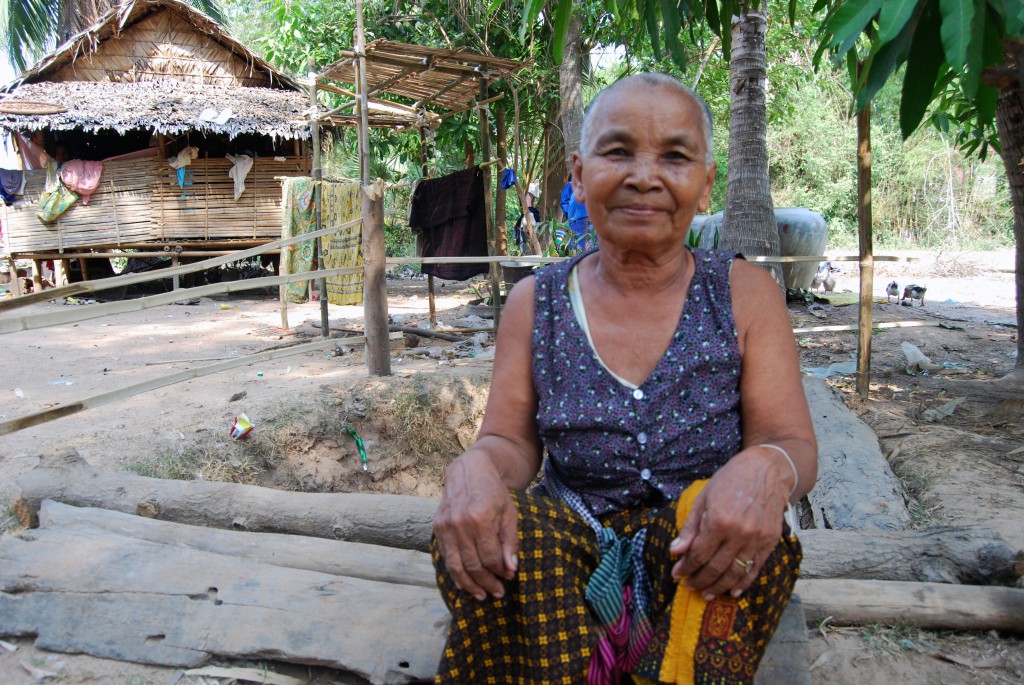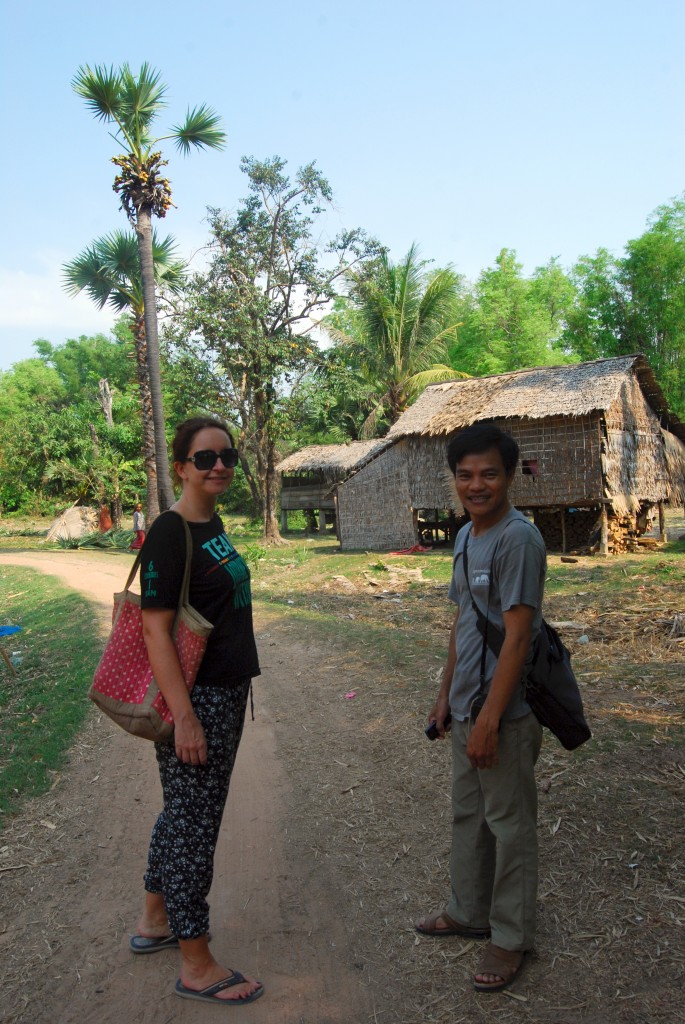There is something about the Cambodian countryside – the dusty streets, the tropical trees and the wooden houses – that captures the imagination. You never know what to expect…
Over the weekend, Operations Manager Anna and I had the opportunity to get out of the city and into the country to experience one of the Journeys Within Our Community (JWOC) tours. The experience is designed to give guests the opportunity to learn more about the project while getting off the beaten track (and I mean off.) For our morning out, we ventured to the village of Kouk Srama with Clean Water Project Manager Seng and a team of scholarship students.
While the scholarship students zipped around the village collecting information for the Clean Water baseline survey, Seng, Anna and I walked through the village discussing its design and the different kinds of wells currently in use to provide water. Kouk Srama is home to 150 families and was chosen for the Clean Water Project after JWOC assessed the communities needs.
JWOC’s Clean Water Project is a 12 step program that was designed to give villages the opportunity to have and maintain access to a clean water supply. In addition to assisting them secure this necessary resource, the project also provides sanitation and hygiene training that encourages the villagers to learn basic techniques that can help prevent illness.
While inspecting one family’s pit well – a deep hole in the dirt dug by hand – we met Yeay (Khmer for grandmother), a sweet elderly woman with an easy smile. The matriarch of her family and owner of the well, I was eager to have Seng facilitate a conversation about her time in the village. After brief introductions she appeared with a four metre long bamboo pole with a bucket hanging from a nail that she adeptly used to bring water up.

After she emptied the bucket of water into a larger one, I asked Seng if it would be alright if I gave the process a try. He seemed hesitant to ask, but Yeay was happy to let me give it a shot.
My first attempt ended rather embarrassingly, with the bucket floating around the bottom of the well after become unhooked. With a bit of a giggle, Yeay caught the lip of the empty bucket, brought it up and hung the handle back on the nail. On my second try I managed to get the bucket to the water while it was still attached to the bamboo pole. Seeing that I was clearly clueless on the next step, Yeay took control and with one fluid sweep of the pole in she was able to sink the lip of the bucket, swoop it around and fill it with water.
Thinking myself strong and able bodied, I then tried to hoist the full bucket out of the well buy pulling up the pole hand-over-hand, only to realize I wasn’t as mighty as I thought. With great effort, plenty of groaning and a little help from my new 65-year-old friend I was able to get the bucket out of the hole. I did, however, fill the water with sand I scraped off the side of the well along the way.

All the onlookers, Anna, Seng and I had a good laugh about my general lack of skills while Yeay got to show off her own impressive abilities. For me the experience demonstrated the adaptability of people to their environment and maybe also how soft I have become since my childhood days outdoors.
It wasn’t a forced moment, but a natural one – a memory that could have only been created by opening myself up and stepping out of my comfort zone with the help of the JW team.
A need for clean water
In addition to offering the opportunity for such unique experiences to guests, the tour is designed to help raise awareness regarding the countries water issues and spread the word regarding JWOC’s community involvement.
Ventures like JWOC’s Clean Water Project are an unfortunate necessity for those living in the Cambodian countryside. One of the most pressing resource issues facing rural villagers in Cambodia is a lack of clean drinking water – over 50 per cent of rural households don’t have safe drinking water. Currently, many villagers drink from open wells or streams and canals; in both cases, the water is often contaminated with bacteria and polluted with waste.Sickness from dirty water impacts on the lives of the already poor by preventing adults from working and children from attending school and in extreme cases leads to death.
We really encourage our guests to incorporate these tours into their itinerary, ideally on weekends when scholarship students are available to attend and chat about their personal experiences.… Read more »


